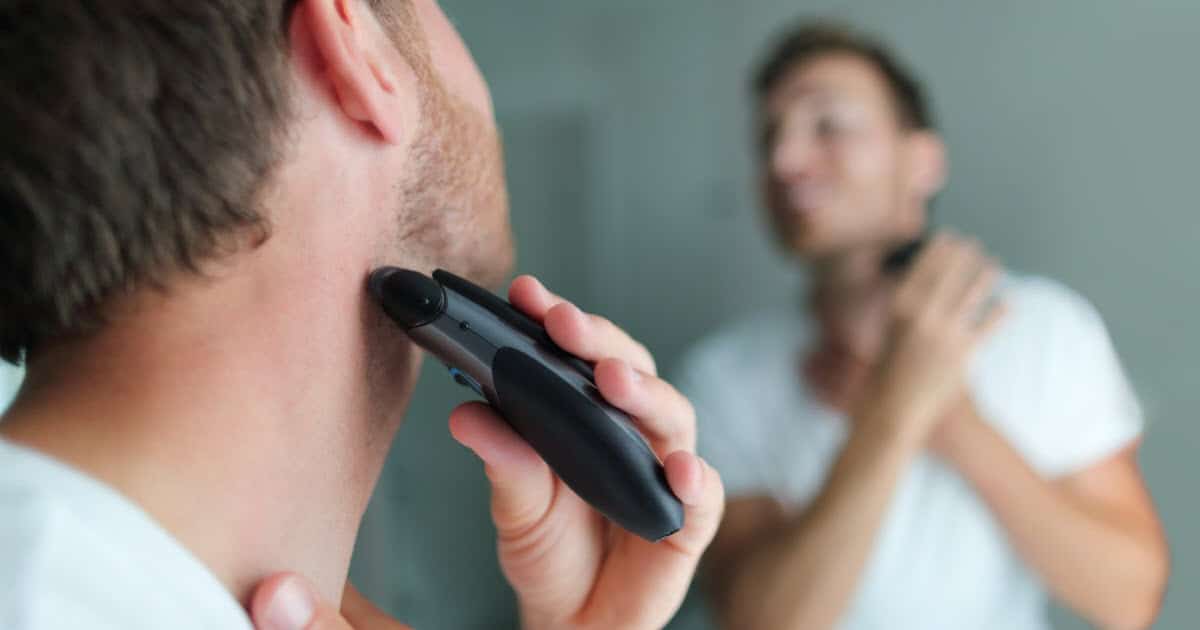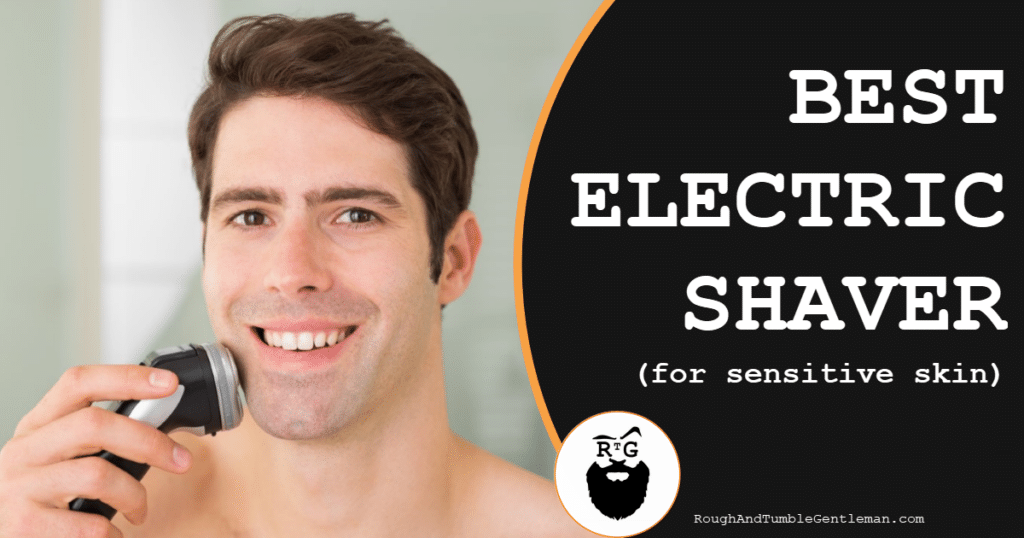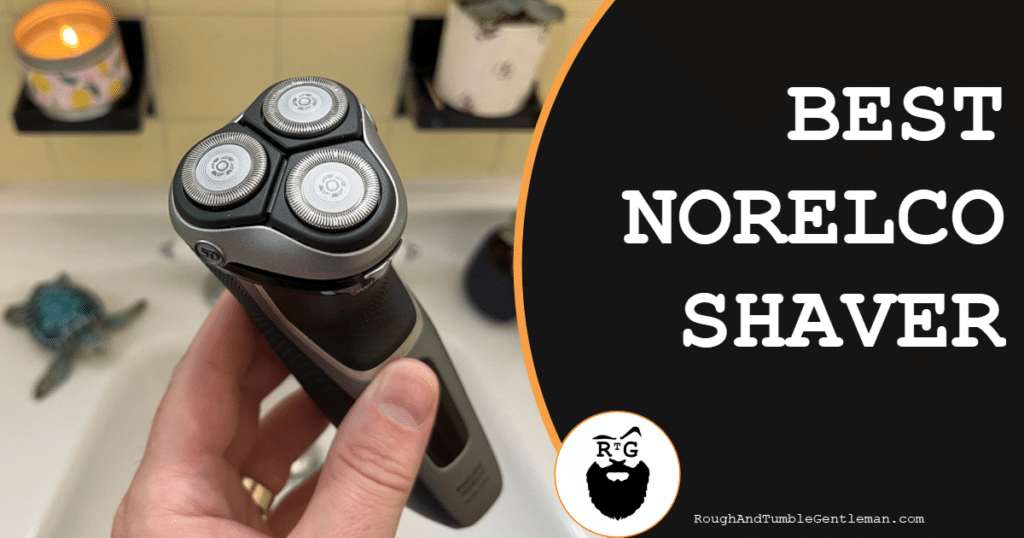Never before have we had so many choices when it comes to shaving. You could go to the barber and let him work his magic, or if you wanted something easier, you could get a traditional disposable razor blade or blade cartridge and do things yourself at home. Today, however, we have more advanced options. Keep reading to find my shaver vs trimmer comparison.
With technical innovations, we now have plenty of new electronic devices you can buy to shave or trim your beard yourself.
Whether you should choose a shaver or a trimmer (or both) depends on your own personal needs and preferences, including what kind of beard you’re trying to grow (or remove).
So, let’s take a deep dive into what these two devices are, how they work, and the advantages and disadvantages of both. It’s time to find out whether a shaver or trimmer would be the best new addition to your bathroom cabinet.
Shaver vs Trimmer Comparison
Let’s start with a direct comparison between trimmers and shavers to explain the differences between them, then dig a little deeper.
Key Differences, Summarized
What is a Shaver?
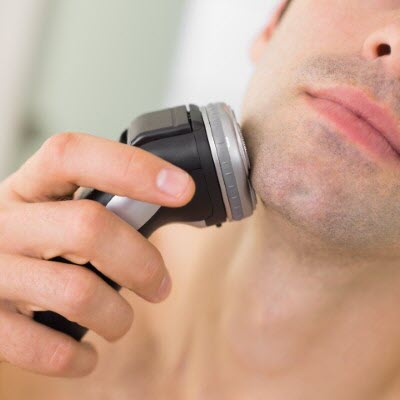
As the names suggest, shavers remove hair down to the skin, giving you the same smooth shave as a manual razor.
The two primary types of electric shavers are rotary or foil.
What is a Trimmer?
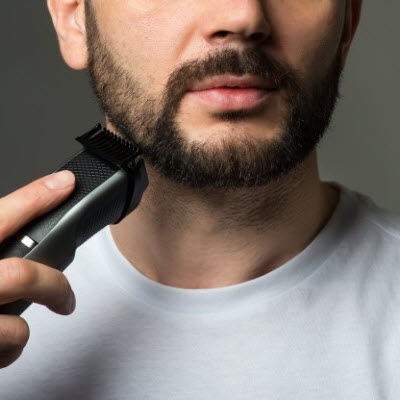
Trimmers, on the other hand, merely cut the ends of the hairs while leaving a certain amount on your face. The length of the hair left behind will depend on the trimmer itself, the settings you choose, and how you use the trimmer.
Trimmers range widely in size and length, but they’re all primarily designed to trim and shape facial hair, not remove it completely.
Design
To cut hair in such different ways, shavers and trimmers have very different designs.
How Trimmers Cut Facial Hair
Trimmers tend to be quite simple. They just involve oscillating blades that cut the hairs between them as they pass over your beard.
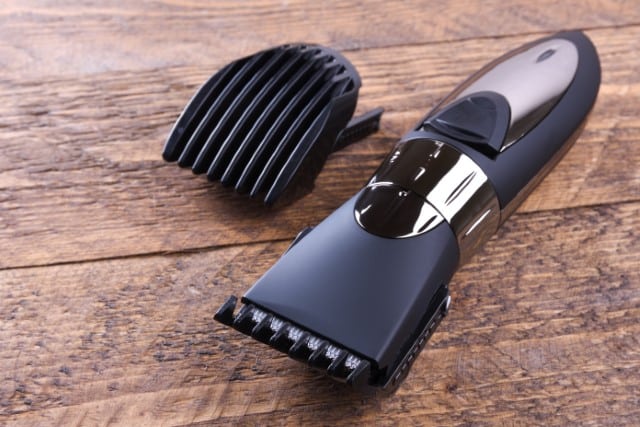
There’s usually no guard or protection on these blades, and they can potentially cut the skin if pressed too close.
However, they may come with attachable plastic guards that prevent you from touching the blades to the skin. These also help you cut the hairs at a uniform length.
How Shavers Cut Facial Hair
Shavers, on the other hand, are a bit more complicated because they have to be able to cut the hair right up against the skin without cutting the skin itself.
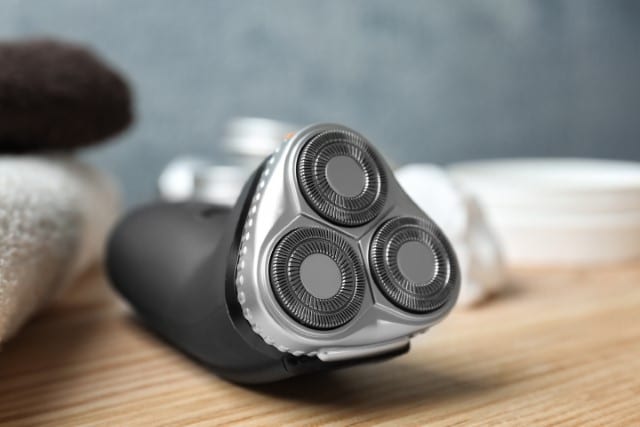
There are two main electric shaver designs out there on the market.
Foil Shavers – Foil shavers have a foil guard over their blades, which oscillate back and forth like on a trimmer.
The foil has tons of little holes in it that the hairs enter, where they meet the blades. You can push the foil against the skin and it will protect you from getting cut.
Rotary Shavers – Rotary shavers use the same principle as foil shavers, but they’re a bit more technologically advanced.
They use protective foil to prevent their blades from reaching the skin, but the blades rotate on spinning wheels rather than oscillate back and forth.
Normally, rotary shavers include multiple rotating blades under this protective foil. The foil is then held up by springs, which allow it to bend and angle itself to get as close to the skin as possible.
Because rotary shavers have multiple heads, they usually cut a large surface area of hair at once.
Advantages and Disadvantages of a Shaver
Understanding the advantages and disadvantages of each instrument is key to any shaver vs trimmer comparison.
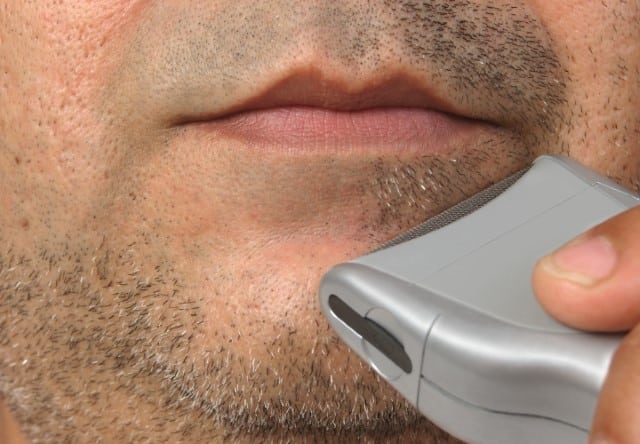
So, let’s start out by looking at the pros and cons of using a shaver on your face.
Upsides
Electric shavers have become increasingly popular over the years because they offer certain advantages over traditional razors and electric trimmers.
- Close shave: Shavers, especially rotary shavers, can get you a skin-close shave that leaves your face smooth all day long. Many can even cut the hair down below the skin, giving you longer periods between having to shave.
- Less irritation: This depends a little on your skin and hair type, but many men, especially those with straight hair and a normal skin type, find that electric shavers don’t irritate their skin as much as other options.
- Safety: The foil on electric shavers is very effective at protecting the skin from the blades. This avoids the cuts and pinches that can come from traditional razors and trimmers.
- Less mess: On most electric shavers, the hair enters holes in the foil where it’s cut by the blades. It then falls down into a repository in the shaver itself, which you can empty after you shave. This avoids getting those impossible-to-clean little bits of stubble all over the sink, one of the biggest sources of female annoyance out there.
- Speed and convenience: Rotary shavers have large surface areas, and this lets you shave a lot of hair at once. When added to the fact that you don’t need shaving cream, these shavers are much faster and more convenient than other options.
Downsides
Of course, shavers aren’t without their problems. There are a couple things to keep in mind.
- No versatility: Shavers don’t really give you any options. You can’t shape your beard into a specific style, just shave it all off. In fact, in the case of rotary trimmers especially, the large surface area of the device doesn’t let you create any nuanced designs.
- In-grown hairs: Electric shavers give you a really close shave, especially if you press firmly down on the skin. Sometimes they can even cut the shaft of the hair below the skin. If you have curly hair, the hair may then grow into the skin itself, causing an in-grown hair.
- High maintenance: Electric shavers are pretty complicated machines. As a result they’re more prone to breakdowns and need to be well maintained.
Advantages and Disadvantages of a Trimmer
How does using a shaver compare to using a trimmer on your face?
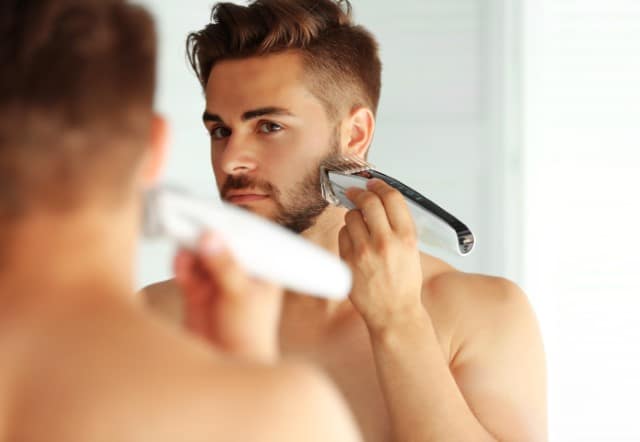
Here are the pros and cons on using a trimmer to cut your facial hair:
Upsides
Trimmers have their upsides as well. So, depending on what you’re looking for, they may be a better choice than a shaver.
- Simplicity: Trimmers are usually a lot simpler, just a pair of oscillating blades. They’re easier to use and easier to fix if they break down.
- Style your beard: You need a trimmer if you want to keep your beard looking neat. You can also use this device for shaping your facial hair into different styles. They’re much more versatile and allow you to cut your beard in different ways. In fact, many trimmers come with different attachments or guards that let you trim in different lengths and widths.
- Leave stubble: A lot of men use a trimmer even for full shaves because it will leave a little bit of stubble. This could be for looks, adding a masculine nuance to your face, or touch. It might also help you avoid in-grown hairs.
Downsides
Don’t forget to consider the disadvantages of trimmers as well.
- Less protection: Trimmers aren’t exactly dangerous, but they have oscillating blades that are exposed. If they catch a fold of skin, they can bruise or nick it. It’s important to keep the skin flat and tight while using a trimmer, and don’t press it down into the skin.
- Messy: Most trimmers leave bits of hair all over the place. Hair also tends to get caught down in the machine itself, which then has to be cleaned out.
Shaver vs Trimmer (which tool is right for you?)
Between trimmers and shavers, the right choice for you will come down to a lot of different factors. These include not just what you want to do with your beard, but also the type of hair and skin you have.
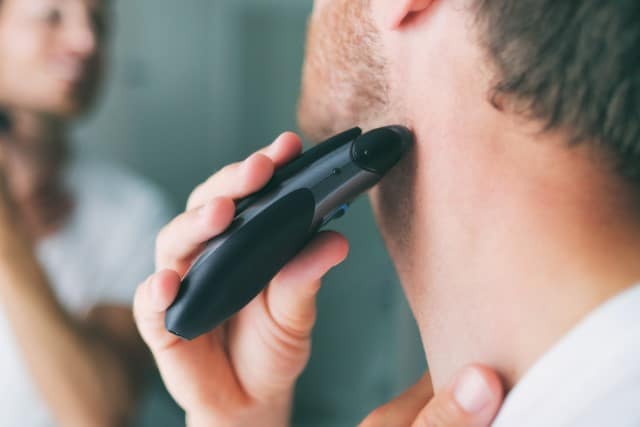
Below I’ll explain whether to use a shaver or trimmer for a variety of beard and shaving preferences.
If you want that clean-shaven look…
This is the most obvious, of course. If you don’t want any facial hair at all, or can’t have any due to rules at your school or job, go with a shaver.
If you need to trim your beard…
If you want to grow out your beard, you should still trim it to keep it looking neat and professional. In that case, go with a trimmer.
Those with curly hair or sensitive skin
If your facial hair is especially curly, an electric shaver or even a traditional razor could cause in-grown hairs and skin irritation.
Getting the right stubble trimmer could still help you get a close shave without having to cut all the way down to the skin.
Now, electric shavers are still a step up from traditional razors when it comes to skin irritation, helping most men avoid pesky razor burn.
Still, for those whose skin reacts to the slightest disturbance, you might need to go with the trimmer.
The frequent traveler
Shavers are one of the best additions to the frequent flyer’s suitcase. They’re compact and clean and allow you to shave on the road without having to worry about carrying multiple razors and shaving cream.
Certain trimmers are also compact and good for traveling, but sometimes they can cause a mess.
It’s always annoying to start unpacking and find that your clothes are covered in little black bits of hair from your trimmer. Packing a shaver and bringing it on the plane will help you to avoid this.
The workaholic
If you’re super busy, go with a shaver, specifically a rotary shaver. These have big surface areas and can cut a lot of hair at once.
You can get a close shave in just a few moments, saving you time when you’re on the go.
The DIY barber
If you want to form your beard into a specific style, be it a ducktail, Van Dyke, French, or even mutton chops or a mustache, you’ll need a trimmer.
This is especially true if you want to keep your style looking sharp and well-faded.
Some men may even want to cut their own hair at home, matching it to their beards and saving a lot of money at the barber’s. If you get the right trimmer, usually a larger, more powerful one, you can use it for both.
The great Grizzly Adams
If you have an especially thick, curly, or unkempt beard but want to get it looking uniform and professional, go with the trimmer. Similarly, trimmers can be great for taming that unruly body hair.

Using a shaver on your chest hair is a surefire recipe for in-grown hairs, so a trimmer is a much better option. Just be sure to use a guard so you don’t nick any vulnerable skin.
The teenager
If you’re a teenager whose beard is just starting to come in, or you’re looking for the right choice for your young son, a shaver is probably the best bet.
It’s an easy, convenient way to start shaving, especially when the beard isn’t totally ready to grow out.
A Note on Shaver-Trimmer Combos
It’s possible to find electric shavers out there that have an attached trimmer. These are great, of course, because they offer you the features of a shaver and trimmer in one device.
Just keep in mind, though, that the trimmers on these usually aren’t that powerful.
They can keep your beard or stubble neat, but they probably aren’t the best for intensive styling or cutting off large amounts of hair.
For this, you’ll need a dedicated trimmer.
Final Thoughts: Shaver vs Trimmer
I hope this shaver vs trimmer comparison has helped you figure out the best option for you.
If you have an established beard that you want to keep, you should get a trimmer.
On the other hand, if you want to remove your beard and get a clean, smooth shave, a shaver is what you’re looking for.
Michael Morris is the head writer here at Rough and Tumble Gentleman. He's got a ducktail beard and loves Brazilian jiu-jitsu. He's married to the woman of his dreams and lives in Brooklyn, NY.

